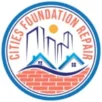House leveling is crucial for your home’s safety and stability. Soil movement and settling can lead to uneven floors and structural problems.
Various techniques exist, from traditional methods like hydraulic jacks to modern solutions like underpinning with steel piers. This guide will outline these techniques, their benefits, and limitations, helping you choose the best solution for your home.
Let’s explore each method to find the right approach.
Traditional House Leveling Methods
Several traditional methods can help restore your home’s foundation and ensure stability.
Common Leveling Techniques
Here are some tried-and-true methods for leveling a house:
- Hydraulic jacks: Jacks are placed under your home’s foundation to lift and stabilize sections, restoring proper alignment.
- Shimming: Wooden or metal shims are inserted beneath sagging beams to provide support and realign the structure.
- Mud jacking: A technique that fills voids under the foundation with a mixture to raise and level the structure back to its original position.
Choosing the Right Approach
Each leveling method has its advantages:
- Hydraulic jacks are ideal for large-scale lifting but require precision.
- Shimming works well for smaller, localized issues but may need adjustments over time.
- Mud jacking is effective for lifting sunken foundations caused by soil erosion or settling.
Assessing your home’s specific needs will help determine the best method for your situation.
Modern House Leveling Solutions
Advancements in technology have introduced more efficient and effective house leveling solutions.
Popular Modern Techniques
Here are some innovative methods for leveling a home:
- Hydraulic jacks: These provide precise lifting and stabilization, allowing for incremental adjustments without causing additional damage.
- Underpinning: This method involves adding support beneath the foundation using steel piers or concrete piles, which enhances stability and extends the lifespan of the structure.
- Foam injection: High-density foam fills voids under the foundation, lifting and leveling it with minimal disruption.
Benefits of Modern Solutions
These techniques offer several advantages over traditional methods:
- Precision and accuracy with minimal risk of damage
- Long-lasting results due to enhanced support and stability
- Less disruption to your daily life, especially with foam injection
Choosing the Right Technique for Your Home
Selecting the ideal house leveling method depends on several key factors tailored to your home’s specific needs.
Key Considerations
Here’s what to keep in mind when choosing a leveling technique:
- Extent of the leveling needed: Minor adjustments may require simpler methods, while significant foundation issues may need more complex solutions.
- Budget and timeline: Some methods, like piercing, can be more expensive and take longer to complete.
- Soil type and climate: The local environment can affect which technique is most effective for your foundation.
- Long-term maintenance: Some methods may require more upkeep over time than others.
Professional Consultation
Consulting a professional is crucial to get tailored advice based on:
- Your home’s unique condition
- Local soil and environmental factors
Making an informed choice ensures lasting stability and minimizes future costs.
House leveling is an essential process to ensure your home’s safety and structural integrity. By understanding the various traditional and modern techniques available, you can make an informed decision tailored to your specific needs.
Whether you opt for hydraulic jacks, shimming, mud jacking, underpinning, or foam injection, consulting with a professional will guide you through the process and help optimize your home’s foundation repair. Taking proactive steps to address leveling issues not only enhances your living environment but also protects your investment in the long run.
Don’t hesitate to reach out to a qualified expert to explore the best options for your home, ensuring its stability for years to come.
